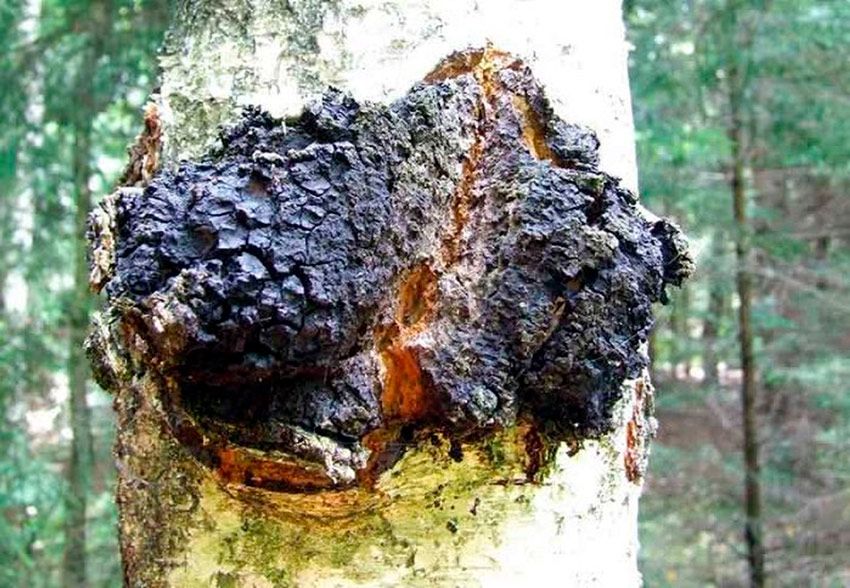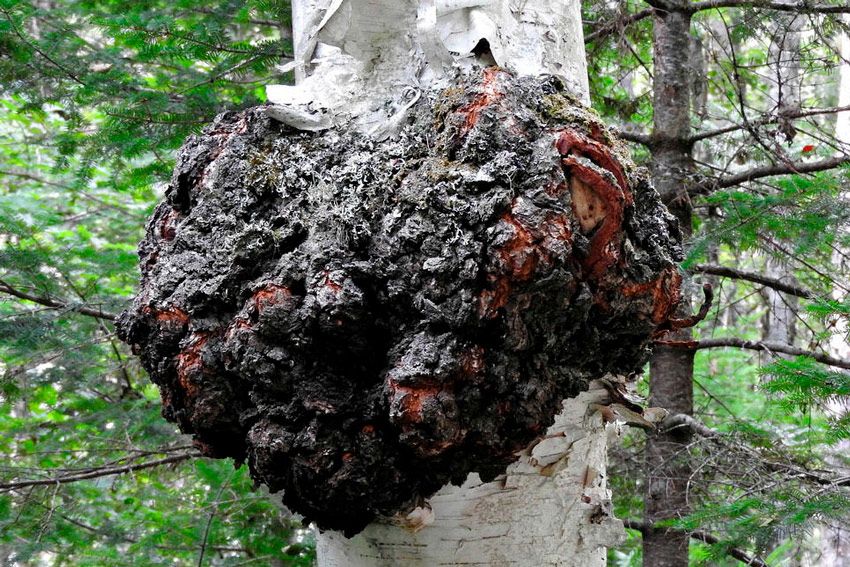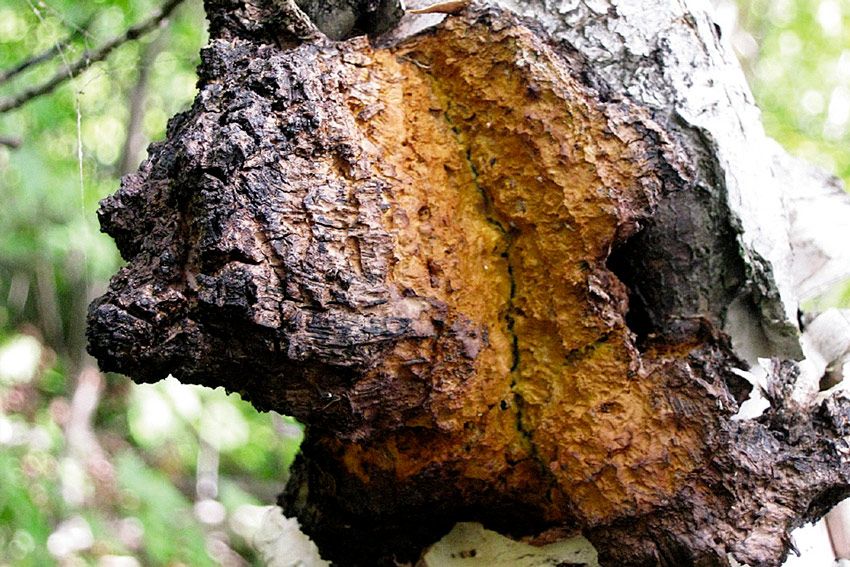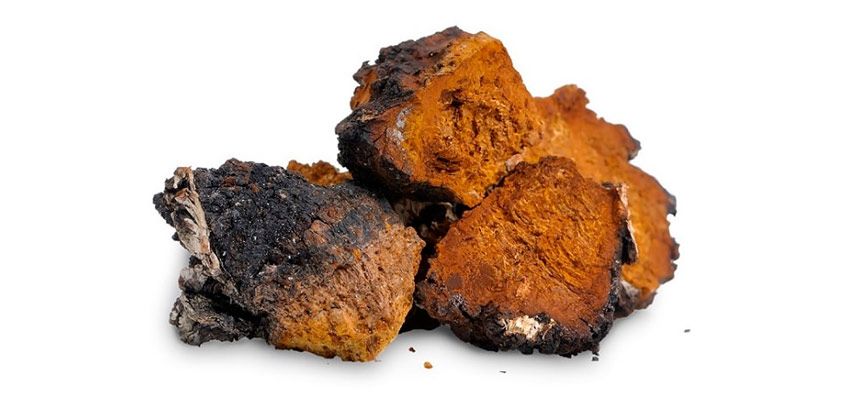Chaga mushrooms: properties and benefits
2 Jahren ago · Updated 5 Monaten ago

It is known as chaga, although its real name is Inonotus obliquus. We explain why this mushroom is so popular.
Today, with the rise of natural therapies and products, it is not surprising that this fantastic medicinal mushroom is consumed by so many people. Add the name Superfood to the mix, and Chaga (Chaga mushroom) is guaranteed success.
This text is for informational purposes only and should not be considered a substitute for professional medical advice. Before making any changes to your diet or lifestyle, it is recommended that you consult a qualified healthcare professional. Similarly, it is important to note that research on the potential benefits of medicinal mushrooms is limited and that more research is still ongoing to fully understand their effects on the human body.
But not just because of the superfood label, but because the Chaga mushroom really does have excellent qualities.
If you would like to buy chaga and check out its benefits, visit our online store.
Chaga, the new superfood
Periodically, and due to the influence of marketing, the internet, and social media, a new superfood appears. These are not gratuitous appearances, because to be considered a superfood, certain properties and benefits for our body are necessary.
One of the latest to receive this nickname was the mushroom Inonotus obliquus, also known as chaga. If you want to experience the benefits of chaga mushroom for yourself, visit our micosanté section, where you will find supplements made from medicinal mushrooms, dehydrated medicinal mushroomsand many other products made from medicinal mushrooms.

What is chaga mushroom?
It is a parasitic mushroom that can be found growing in wounds in the bark of birch trees in their natural state, mainly in the colder regions of Eastern Europe, Asia, and North America. It is known as “charcoal nose” because it resembles this when it grows on white birch and other light-colored trees.
In these countries, it is referred to by names that highlight its medicinal properties. In China, for example, it is known as the King of Plants and is also considered a superior herb in traditional Chinese medicine. In Siberia, it is called God's Gift or Mushroom of Immortality, and in Japan, Forest Diamond.
How to recognize Inonotus obliquus or chaga mushroom?
This particular mushroom looks like a dark, cracked mass. It is black on the outside and ochre yellow on the inside. On the outside, it resembles a piece of burnt charcoal.
Where does chaga inonotus grow?
The chaga inonotus mushroom grows naturally in the northernmost forests of the European continent. We have already mentioned that it is a parasitic fungus that grows on white birch trees and other trees in the cold forests of Eastern and Northern Europe, Siberia, Asia, Canada, and Alaska. It can remain parasitic on the trunk for a long time. In fact, it is not harmful to the white birch trunk that shelters it.
The colder and more extreme the forest that shelters it, the higher the concentration of active ingredients in the fruiting body, so specimens harvested in Siberian forests are the most sought after.
Chaga, the healing mushroom. A medicinal mushroom with a thousand-year-old tradition
The medicinal use of this mushroom in regions where it grows naturally, such as Russia, Korea, and China, has a thousand-year-old tradition. In other countries, such as the United States, the consumption of Chaga mushroom has increased in recent years thanks to the spread of the benefits of this mushroom, where it has been nicknamed the new shiitake.
Aleksandr Solzhenitsyn, Russian writer and winner of the Nobel Prize for Literature in 1970, studied the properties of Chaga.
Beyond his brilliant literary career, Solzhenitsyn also developed a deep interest in traditional medicine and herbs during his exile, particularly while in the Siberian region. There, he had the opportunity to learn more about the Chaga mushroom, a natural treasure revered in Siberian tradition for its purported health benefits.
Although the specific link between Solzhenitsyn and the Chaga mushroom may not be widely known, his story highlights how this mushroom has been part of the region's rich cultural and medicinal tradition, leaving a legacy that transcends both literature and health.
What are the properties and benefits of Chaga?
The properties attributed to this mushroom are many and highly valued, hence its commercial success. Among other things, its active biomolecules are credited with:
- Ability to reduce cholesterol
- Prevents and helps treat uterine, breast, and colorectal cancer, among others.
- It is recommended for treating pancreatitis
- Reduces blood pressure
- Has antioxidant properties
- Reduces blood sugar
- Strengthens the immune system

In addition, it is a food containing a good number of nutrients, including the following:
- Minerals: iron, zinc, copper, manganese, potassium, calcium, cesium, rubidium, and selenium
- Vitamins B and D
- Enzymes, amino acids, phenols, sterols, botulinum acid, lignins, triterpenes, polysaccharides, dismutase, pantothenic acid, and chromogenic complex
As a natural, wild food, it is a source of beta-glucans and is free from additives, making it suitable for vegan diets.
The benefits and properties of chaga
There are documents proving the medicinal use of chaga for over 2,200 years in China. In Europe, however, consumption began much later, around the 16th century. But it was not until the 1990s that its use became popular.

The reasons for this are undoubtedly its many benefits. We will list some of the most important ones
Chaga mushrooms are known to strengthen the immune system due to their high beta-glucan content, which stimulates the production of leukocytes and helps the body defend itself against disease.
It acts as an antimicrobial and is very useful in the treatment of gastritis and ulcers, promoting digestion and bile production, as well as relieving pain and inflammation. It also helps regulate blood pressure and control blood cholesterol, thanks to betulinic acid, making it beneficial in cases of thrombosis, atherosclerosis, and cardiovascular disease.
Its richness in minerals, vitamins, and polysaccharides gives it adaptogenic properties that help reduce depression, anxiety, and stress, especially in difficult situations or aggressive treatments.
It is a powerful antioxidant with anti-aging effects, helping to fight free radicals and reduce the signs of aging. In addition, it has hypoglycemic properties that make it a support in the treatment of diabetes.
Chaga has also been shown to be beneficial in cancer and tumor processes, inhibiting the development of cancer cells and strengthening the immune system. It protects the liver and digestive system thanks to triterpenoids, and its saponin content gives it anti-inflammatory, antiviral, and soothing effects.
Finally, its vitamin D2 and melanin make it an excellent photoprotector, protecting the skin and eyes from the sun's rays, and its properties make it useful in skin problems such as psoriasis and in protection against pollution and stress.

How to consume Chaga mushroom?
As with the consumption of any other medicinal mushroom such as reishi, cordyceps, shiitake, etc., taking supplements containing medicinal mushrooms cannot replace medical treatment or a diet prescribed by a specialist. Therefore, before starting to consume medicinal mushrooms, we recommend that you consult your specialist.
These are not miracle plants or mushrooms, although it is also true that, being completely natural, it is not usual for their consumption to be counterproductive.
How is Chaga mushroom consumed?
Chaga mushrooms can be consumed in various forms, such as tea infusions, tinctures, capsules, extracts, or powder. The most common form is to prepare a hot infusion of the dried mushroom in hot water to make Chaga tea.
Chaga infusion
The most common way to consume chaga powder is in an infusion. To do this, you will need the natural mushroom, already dehydrated and, if possible, in powder form. If this is not the case, break it into small pieces and infuse them in a drink. The result will be a coffee-like liquid that has extracted the active ingredients from the mushroom.
Infusions from concentrated powder
In specialty shops, herbalists, and some medicinal mushroom stores, you can find encapsulated chaga extracts or chaga elixirs for sublingual application. You can also find concentrated chaga powder to make infusions or add to meals.
In any case, ingesting chaga as an ingredient in a recipe is not recommended at this time due to the tough texture of the mushroom.
What is the best way to store chaga mushrooms to preserve their properties?
To preserve its properties, it is important to store Chaga mushrooms in a cool, dry place away from direct sunlight. Dried Chaga can generally be stored for several months to a year, depending on storage conditions.
Are there any contraindications for using Chaga mushrooms? Does it have any side effects?
Although chaga mushroom is a natural food with many benefits, certain precautions should be taken when consuming it. Due to its concentration of minerals and active compounds, it is recommended to start with low doses to detect any intolerances.
In addition, it is important to consult a doctor before consuming it regularly, especially if you are taking diabetes medication, as its hypoglycemic effect could cause an excessive drop in blood sugar levels.
Its use is not recommended with anticoagulant treatments or aspirin, as it could increase the risk of bleeding. In general, although it is a natural product, it is essential to take these warnings into account to avoid side effects or interactions with other treatments.
This text is for informational purposes only and should not be considered a substitute for professional medical advice. Before making any changes to your diet or lifestyle, it is recommended that you consult a qualified healthcare professional. Similarly, it is important to keep in mind that research on the potential benefits of medicinal mushrooms is limited and that further research is ongoing to fully understand their effects on the human body.

Sie könnten Sie interessieren